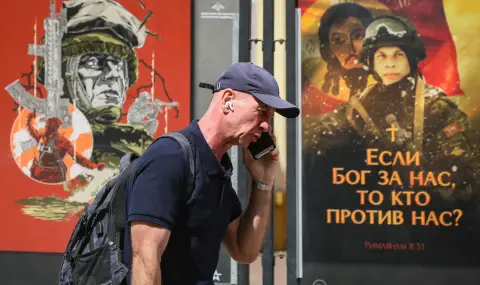The Russian authorities are trying in every possible way to cover up the increasing militarization of the national budget. But this, it seems, no longer suits even many of the government officials.
Bloomberg has documents that clearly show that 40 percent of next year's budget is earmarked for military spending, and another 30 percent is classified. I.e. most likely, they are also related to the war and the aggression against Ukraine. But who is the lion's share of this money for?
Only war matters
It should be noted right away that it is not only about the costs of armaments and soldiers. This 40 percent of the budget for 2025 also includes deductions for the police and special services. I.e. for the fight against dissenters.
Terrorist acts in recent years and the rise in crime, especially the increase in attacks with the use of firearms, which the authorities try to attribute to migrants, testify that the special services and repressive bodies are preoccupied first with the war and with the fight against the opposition, and the “ordinary" criminal activities have receded into the background. Without special efforts and strict repression of the occupied Ukrainian territories, the protests would most likely turn into a serious anti-war movement.
And what could be said about the other 30 percent of the expenses provided for in the Russian budget for 2025? Their purpose is a secret, but the majority is traditionally associated with the army, special services and military science. Moreover, more funds are allocated for this purpose than for education, health care, social policy and the national economy combined.
It is important to note that the Russian authorities, who care about symbolism, decided to present the new militaristic draft budget in the second year of the annexation of the partially occupied Ukrainian regions: Luhansk, Donetsk, Zaporizhia and Kherson. I.e. it is immediately clear where most of the money will go.
Bloody business
From the expenditure line in the budget, it is understood that Russian doctors or teachers cannot count on a salary increase. In the context of inflation, their incomes continue to decline. And inflation will grow rather than slow down - this is clear both from the data of foreign analysts and from the actions of the Russian Central Bank.
But the salaries of the mercenaries, who are currently the backbone of the Russian army fighting against Ukraine, will not decrease, and maybe even increase. First-time DOD contract raises and military pay are barely growing right now, but that can't last much longer.
The Kremlin is not yet ready to make a political decision on a new mobilization to get “free" soldiers, risking social discontent to grow. It is more likely that he will have to find new ways to stimulate the military, primarily financial, because “patriotic sentiments" and “the growth in the number of volunteers" are myths in which even the Russian propagandists themselves no longer believe.
Practically, next year, the incomes of those working in the military industry will probably grow, as well as those who - despite the banking difficulties - continue to import production from China by double, i.e. with military purpose.
But here it is more about medium and large businesses. As independent estimates show, big business close to the Kremlin is profiting handsomely from the war, the fortunes of these people have been growing steadily for the second year. But it is not so much the private military industries, which are almost non-existent anymore, but the metallurgy that provides steel to the military plants, the chemical and oil refining industries. That even the food industry, because "to clothe, shoe and feed" the soldier remains the main problem of the Russian authorities.
The illusion of well-being
But - between the top of this “food pyramid" of war and its foothills, i.e. of those who work in the factories or kill the inhabitants of the neighboring country, there is a significant difference. Manufacturers can very easily adjust prices for inflation. While the ordinary beneficiaries of the war get more only when Russians die at the front and the authorities feel an acute labor shortage - then the wages of both soldiers and workers increase.
These “wild" money, however, raises inflation in conditions of an overheated economy. So in 2025, the incomes of the military, police, secret services, skilled workers and engineers and, of course, businesses close to Putin will continue to grow. Prosperity will gradually continue to move from the big cities to the monocities built around the military factories that have existed since Soviet times. But this will be a temporary phenomenon. After all, inflation will “eat" and this war profit. And the situation of the remaining budget employees will become even worse in Russia.
Ivan Preobrazhenski is a doctor of political sciences, an expert on Central and Eastern Europe, a commentator in several media and the author of a weekly column in DV.
